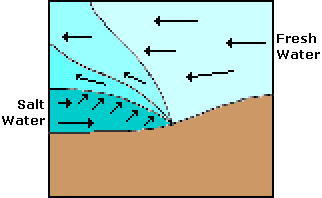 | ||||||||
 |
Estuarine ScienceSalt Wedge Estuary Salt wedge estuaries occur when the mouth of a river flows directly into salt water. The circulation is controlled by the river that pushes back the seawater. This creates a sharp boundary that separates an upper less salty layer from an intruding wedge-shaped salty bottom layer. The mouths of the Mississippi, Columbia and Hudson rivers are examples of salt wedge estuaries.
|
|||||||